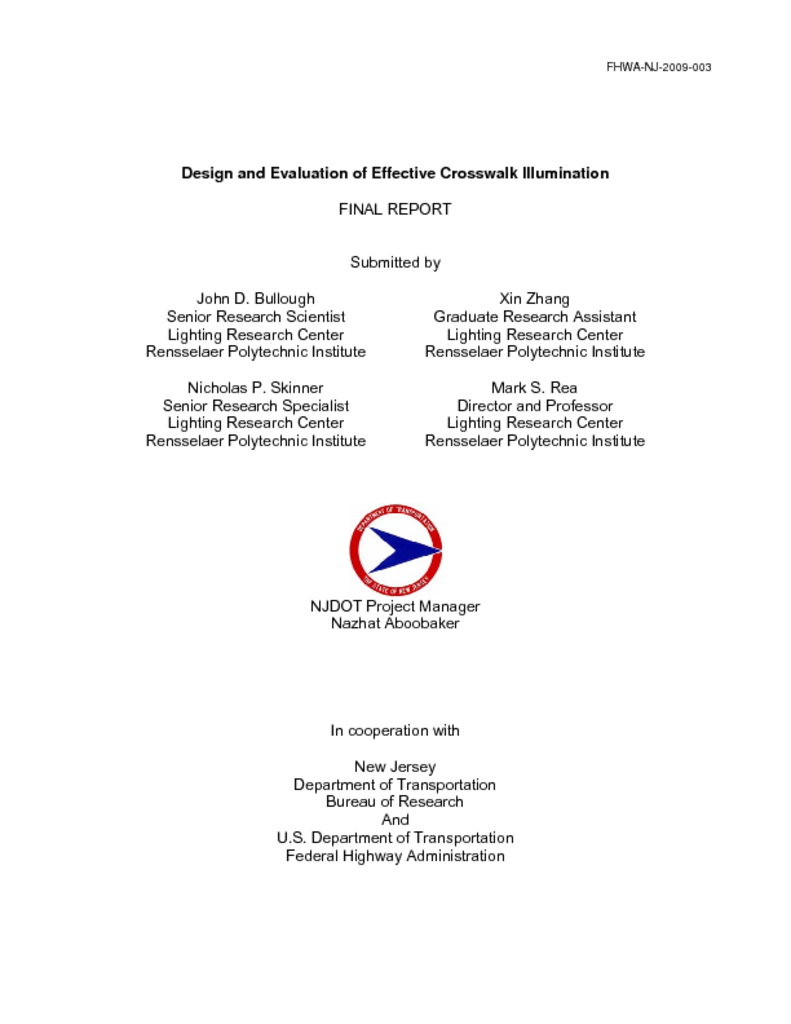Pedestrian-related crashes are a common cause of roadway fatalities, and reduced visibility at night is a probable contributor to pedestrian injuries and death. The purpose of the present study was to systematically evaluate different approaches to lighting at pedestrian crosswalks to improve pedestrian visibility and detection. The project team conducted a series of photometrically accurate lighting simulations in order to assess the visual conditions resulting from different lighting configurations, and assessed the economics (initial cost, and electricity and maintenance costs) of each system evaluated. Finally, the most promising lighting configuration was field tested during a one-night demonstration at an intersection in New Jersey. The results of visual performance and economic evaluations converged in that they suggested that a bollard-based fluorescent lighting system mounted at the ends of a crosswalk and oriented to provide vertical illumination on pedestrians in the crosswalk could be a feasible approach with reduced costs to improving pedestrian visibility. The results of the field demonstration also confirmed that the bollard-based solution was practical. Improvements of the approach such as use of louvers for glare control and coordinating light output level with the timing of pedestrian signals to provide an alerting signal are also provided.




